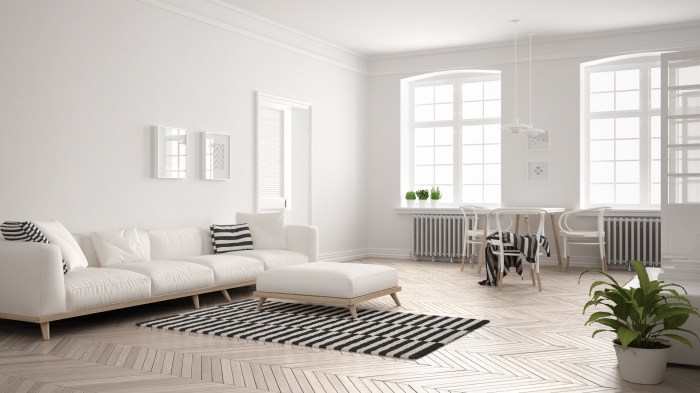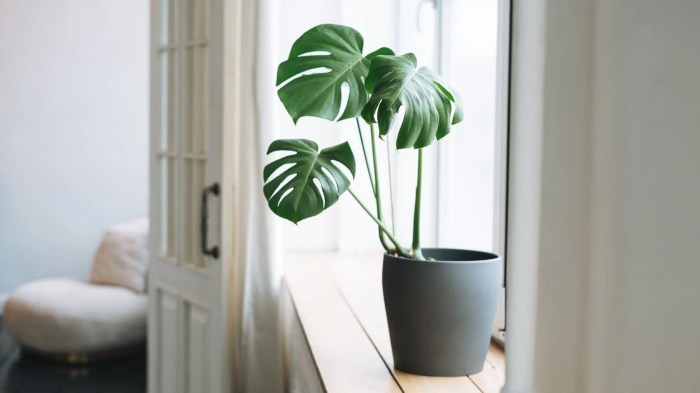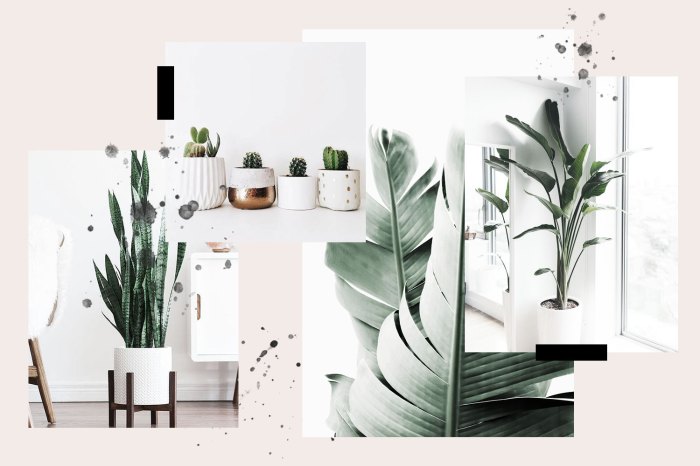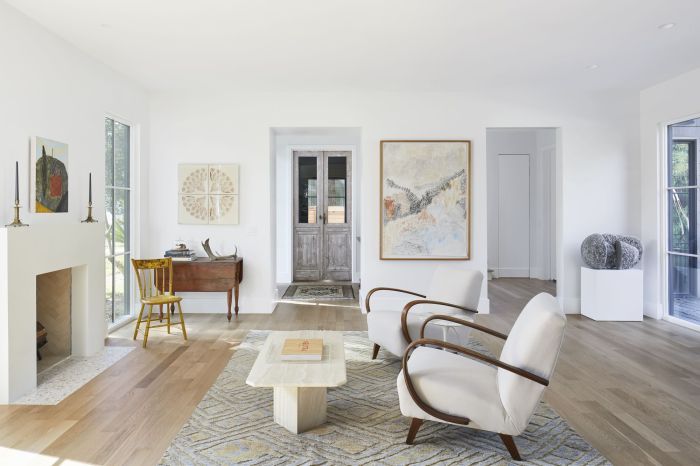The rise of industrial-style home décor reflects a fascinating blend of aesthetics and functionality. Born from the repurposing of factory and warehouse elements, this design movement celebrates raw materials, exposed structures, and a utilitarian elegance. Its enduring appeal stems from a unique ability to create spaces that are both visually striking and surprisingly adaptable, blending seamlessly with various interior styles.
Understanding the core principles of industrial design—the materials, the historical influences, and the careful integration of elements—is key to unlocking its transformative potential within the home.
This exploration delves into the heart of industrial home décor accessories, examining their defining characteristics, popular categories, sourcing ethics, integration into diverse home styles, and practical maintenance. We’ll journey from the historical roots of this aesthetic to contemporary trends, offering a comprehensive guide for both enthusiasts and aspiring designers seeking to infuse their living spaces with the raw charm of industrial design.
Defining Industrial Home Decor Accessories
Industrial home decor, a style born from the aesthetic of factories and warehouses, has become a surprisingly popular design choice for residential spaces. This aesthetic, characterized by raw materials, functional designs, and a sense of history, offers a unique blend of rugged charm and modern sophistication. Understanding its key elements allows for a more informed appreciation and effective implementation within the home.
Industrial home decor accessories are items that embody the key characteristics of the industrial style, enhancing a space’s overall aesthetic. These pieces often incorporate repurposed materials, a muted color palette, and a focus on functionality, reflecting the heritage of industrial architecture and design. The resulting atmosphere is one that is both visually striking and inherently practical.
Materials Commonly Used in Industrial-Style Accessories
The materials used in industrial-style accessories directly reflect the style’s origins in industrial spaces. These materials often showcase a raw, unfinished look, contrasting with the polished aesthetics of many other design styles.
Metals, particularly steel, iron, and copper, are foundational to this aesthetic. We see this in everything from metal shelving units and lighting fixtures to decorative accents like gears and pipes. Wood, often reclaimed or with a distressed finish, adds warmth and texture, balancing the coolness of the metal. Concrete, with its inherent strength and rough texture, also plays a significant role, appearing in everything from planters to tabletops.
Finally, leather, often used in seating or accent pieces, adds a touch of luxury and durability, perfectly complementing the other materials.
Five Distinct Design Elements Defining the Industrial Aesthetic
Several key design elements consistently define the industrial aesthetic. These elements, when combined, create the signature look of this popular style.
The five defining elements are: (1) Exposed brick or concrete: These raw materials often form the backdrop for industrial interiors, creating a sense of authenticity and history. (2) Metal accents: Iron, steel, and copper are ubiquitous, appearing in lighting fixtures, furniture, and decorative elements. (3) Reclaimed wood: Aged wood, often with a distressed finish, provides warmth and visual interest.
(4) Functional furniture: Furniture often features simple, utilitarian designs, emphasizing functionality over ornamentation. (5) Neutral color palettes: Grays, browns, blacks, and muted greens and blues dominate, creating a sense of calm and sophistication.
Historical Influences Shaping Industrial Style
The industrial aesthetic is deeply rooted in the late 19th and early 20th centuries, reflecting the rise of industrialization and the unique aesthetics of factories, warehouses, and workshops.
The style’s origins lie in the architecture and design of industrial buildings. The exposed brick, metal piping, and large windows of factories and warehouses became iconic elements. The rise of mass production and the use of utilitarian materials also influenced the style. Furthermore, the post-industrial movement of the late 20th century, which saw the repurposing of old industrial spaces into lofts and residences, played a crucial role in popularizing the industrial aesthetic in home decor.
This adaptation involved carefully integrating the existing structural elements – exposed brick, metal beams, and high ceilings – into the design, celebrating the raw beauty of the original space.
Popular Industrial Home Decor Accessory Categories

Industrial home decor, characterized by its raw materials and functional aesthetics, offers a diverse range of accessories to achieve the desired look. These accessories, drawing inspiration from factories and workshops of the past, seamlessly blend functionality with a unique aesthetic appeal, transforming living spaces into havens of refined industrial style. The selection and arrangement of these accessories are crucial in creating a cohesive and visually striking environment.
The popularity of specific categories within industrial home decor accessories fluctuates with evolving design trends, but several consistently remain prominent due to their versatility and inherent appeal. These categories represent a spectrum of functional and decorative elements that contribute to the overall ambiance.
Industrial Home Decor Accessory Categories Overview
| Category | Description | Example Materials | Example Designs |
|---|---|---|---|
| Lighting | Illumination fixtures that embody the raw aesthetic of industrial design. Often feature exposed bulbs and metallic frames. | Metal (steel, iron, brass), glass, wood | Pendant lights with exposed Edison bulbs, gooseneck lamps, track lighting systems |
| Storage | Functional storage solutions that reflect the utilitarian nature of industrial design. Often repurposed or designed with a raw, unfinished look. | Metal (steel, iron, reclaimed wood), glass, leather | Metal shelving units, rolling carts, reclaimed wood crates, metal lockers |
| Furniture | Furniture pieces that incorporate industrial design elements, emphasizing functionality and durability. Often feature metal frames and simple designs. | Metal (steel, iron), wood, leather | Metal chairs with leather seats, metal and wood coffee tables, industrial-style sofas |
| Decorative Accessories | Smaller items that add character and enhance the overall industrial aesthetic. These can be functional or purely decorative. | Metal, glass, wood, concrete, leather | Metal wall art, vintage clocks, industrial-style picture frames, concrete planters |
A Popular Industrial Lighting Fixture: The Cage Pendant Light
Imagine a pendant light fixture: a simple, yet striking design. The central element is a metal cage, likely crafted from dark, wrought iron or blackened steel, with a slightly distressed finish suggesting age and wear. This cage, roughly cylindrical in shape, acts as both a protective housing and a decorative element. Inside the cage, a large Edison-style bulb, its filament clearly visible, glows warmly.
The bulb’s amber glow filters through the cage’s openwork, casting a soft, diffused light while still showcasing the bulb’s vintage charm. The fixture is suspended from the ceiling by a chain or cord, adding to its industrial aesthetic. The overall effect is one of rugged elegance, a perfect blend of functionality and artistic expression, representative of the industrial style’s core principles.
Vintage versus Modern Industrial Accessories
Vintage industrial accessories, often repurposed from factories or workshops, possess a unique patina and inherent history. Their imperfections – scratches, dents, and faded paint – add to their character and authenticity. Modern interpretations, on the other hand, emulate the aesthetic of vintage pieces while employing contemporary manufacturing techniques and materials. They offer a cleaner, more polished look, often featuring sleek lines and precise finishes, although they may still incorporate raw materials like steel or wood to maintain the industrial feel.
The key difference lies in the level of distressing and the manufacturing process; vintage pieces reflect genuine age and wear, while modern pieces strive for a stylistic imitation of that aged look.
Emerging Trends in Industrial Home Decor Accessories
Three notable trends are shaping the future of industrial home decor accessories. Firstly, the incorporation of sustainable and reclaimed materials is gaining significant traction, reflecting a growing awareness of environmental responsibility. Secondly, the blending of industrial elements with other styles, such as mid-century modern or bohemian, is creating unique and eclectic spaces. Thirdly, the use of warmer metals, such as brass and copper, is softening the traditionally harsh aesthetic of industrial design, adding a touch of luxury and warmth to the overall ambiance.
This is evidenced by the increasing popularity of brass lighting fixtures and copper accents in modern industrial interiors.
Sourcing and Manufacturing Industrial Home Decor Accessories

The creation of industrial home decor accessories involves a complex interplay of material sourcing, manufacturing processes, and ethical considerations. Understanding these aspects is crucial for both consumers seeking ethically produced items and manufacturers aiming for sustainability and responsible practices. The journey from raw material to finished product is a fascinating blend of artistry and engineering, shaped by both technological advancements and enduring craftsmanship traditions.The ethical sourcing of materials for industrial home decor accessories is paramount.
Consumers are increasingly demanding transparency and accountability in the supply chain, driving manufacturers to prioritize sustainable and ethically responsible practices. This includes ensuring fair labor practices, minimizing environmental impact through responsible forestry and mining, and supporting local communities. The use of recycled and reclaimed materials is also gaining traction, reflecting a growing awareness of the environmental consequences of resource depletion.
For example, using reclaimed wood from demolished buildings reduces deforestation and offers unique character to the finished product. Similarly, sourcing steel from recycled sources reduces the energy intensity of production compared to using virgin materials.
Ethical Considerations in Material Sourcing
Ethical sourcing necessitates a comprehensive approach, encompassing environmental and social responsibility. Environmental considerations include minimizing waste, reducing carbon emissions, and selecting materials with low environmental impact. Social responsibility involves ensuring fair wages and safe working conditions for all workers involved in the supply chain, from extraction to manufacturing. Transparency is key, with clear traceability of materials and manufacturing processes allowing consumers to make informed choices.
Certification schemes, such as the Forest Stewardship Council (FSC) for wood and Fairtrade for certain materials, can provide assurance of ethical practices. Ignoring these ethical aspects can lead to reputational damage for manufacturers and a loss of consumer trust.
Handmade versus Mass-Produced Industrial Accessories
Handmade and mass-produced industrial home decor accessories represent distinct approaches to manufacturing, each with its own advantages and disadvantages. Handmade accessories often feature unique designs and superior craftsmanship, reflecting the artisan’s skill and attention to detail. However, they typically command higher prices and have limited production capacity. Mass-produced accessories, on the other hand, are more affordable and readily available, benefiting from economies of scale and efficient manufacturing processes.
However, they may lack the unique character of handmade pieces and may be produced with less attention to detail. The choice between handmade and mass-produced items depends on individual preferences, budget, and the desired level of uniqueness.
Potential Material Sources for Industrial-Style Items
The selection of materials is crucial in achieving the desired aesthetic and functionality of industrial-style accessories. A wide range of materials lends itself to this style, offering both visual appeal and durability.
- Reclaimed Wood: Offers unique character and texture, often showcasing signs of age and wear.
- Metal Piping: Galvanized steel or black iron pipes are iconic elements of industrial design, providing structural integrity and a distinctive aesthetic.
- Steel Sheets: Used for creating shelves, tabletops, and other surfaces, offering durability and a clean, industrial look.
- Cast Iron: Provides a robust and vintage feel, suitable for creating decorative accents and functional pieces.
- Concrete: Offers a raw and textured surface, ideal for creating countertops, bases, and other structural elements.
- Leather: Adds a touch of warmth and sophistication, often used for accents such as straps, handles, or seating.
Manufacturing Process: Metal Pipe Shelving
The manufacturing process for metal pipe shelving exemplifies the blend of precision and artistry inherent in industrial design. The process typically begins with sourcing the raw materials—steel pipes, fittings, and potentially brackets. The pipes are cut to the desired lengths using specialized cutting tools, ensuring precise measurements. Fittings, such as elbows, tees, and flanges, are then carefully attached to the pipes using threading techniques.
This requires precision to ensure stability and structural integrity. The assembled framework is then typically cleaned and, depending on the desired aesthetic, may be treated with a protective coating such as powder coating or paint. Finally, shelves, usually made of wood or metal, are attached to the framework, completing the shelving unit. Quality control measures are implemented throughout the process to guarantee durability and a consistent finish.
The entire process highlights the importance of both skilled craftsmanship and precise engineering.
Integrating Industrial Accessories into Different Home Styles
The inherent versatility of industrial design allows its aesthetic elements to seamlessly integrate into a variety of home styles, transforming spaces from stark minimalism to cozy rustic retreats. The key lies in understanding the principles of industrial design – its emphasis on raw materials, functionality, and a sense of history – and strategically incorporating these elements to complement, rather than clash with, the existing decor.
This involves a careful balance of textures, colors, and the strategic placement of key industrial pieces.
Industrial Accessories in Minimalist Homes
Minimalist design prioritizes clean lines, open spaces, and a limited color palette. Integrating industrial accessories requires a judicious approach, focusing on pieces that enhance the existing simplicity rather than overwhelming it. A single, statement piece, such as a vintage metal rolling cart used as a side table, or a sleek, black metal floor lamp with geometric lines, can effectively add a touch of industrial character without disrupting the minimalist aesthetic.
The raw metal surfaces of these pieces can provide a textural contrast against the smooth surfaces common in minimalist settings. Furthermore, the functionality inherent in industrial design aligns perfectly with the minimalist emphasis on practicality and purpose. Avoid cluttering the space; less is truly more in this context.
Blending Industrial and Rustic/Farmhouse Decor
The marriage of industrial and rustic styles creates a unique and visually appealing blend. The raw, unfinished textures of both styles complement each other. Think exposed brick walls accented by metal shelving units displaying vintage jars and rustic wooden crates. Industrial metal pendant lights hung over a farmhouse table create a dramatic yet harmonious focal point. The contrast between the cool tones of the metal and the warm tones of the wood creates a balance, preventing either style from dominating.
Reclaimed wood elements, such as coffee tables with metal bases, or industrial metal chairs paired with a distressed wooden dining table, further solidify this synergy. The key is to maintain a balance; incorporating too many industrial elements might overshadow the rustic charm, and vice versa.
Modern Living Room Mood Board: Industrial Accents
Imagine a spacious living room with a neutral color palette – soft greys and whites. The focal point is a large, modular sofa in a light grey fabric. Above the sofa hangs a striking industrial-style pendant light made of exposed Edison bulbs housed in a black metal cage. A low, rectangular coffee table with a metal frame and a reclaimed wood top sits in front of the sofa.
On either side of the sofa are two sleek, black metal floor lamps with adjustable arms, providing task lighting. A vintage metal toolbox, repurposed as a side table, rests near the sofa, holding a few carefully selected books and a small potted plant. The walls are adorned with a few black and white photographs in simple, metal frames.
The overall effect is one of sophisticated simplicity, where the industrial elements add character and texture without sacrificing the clean lines of modern design. The contrast between the soft textures of the sofa and the cool, hard surfaces of the metal creates visual interest.
Mitigating Harshness in Industrial Decor
While the raw aesthetic of industrial design can be striking, it can also feel cold or uninviting if not carefully managed. To soften the impact, incorporate warm textures such as natural fibers (wool rugs, linen throws), and warm lighting. Strategic use of plants adds life and warmth, counteracting the potentially harsh feel of metal and concrete. Introducing elements of wood, particularly in warmer tones, further mitigates the coldness.
Warm-toned lighting, such as incandescent bulbs or warm-white LED lights, significantly impacts the overall atmosphere. Finally, layering textures – combining smooth metal surfaces with rough-hewn wood or soft textiles – adds depth and visual interest while mitigating the potentially stark effect of industrial elements alone.
Styling and Placement of Industrial Accessories
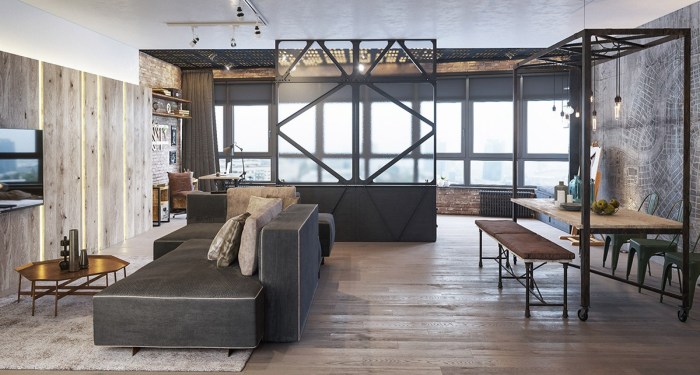
The strategic placement and styling of industrial home decor accessories are crucial for achieving a balanced and aesthetically pleasing interior. Understanding the principles of visual weight, light interaction, and texture interplay allows for the creation of a space that is both functional and visually captivating, reflecting the raw, utilitarian beauty inherent in industrial design. Careful consideration of these factors transforms individual pieces into a cohesive and impactful design statement.
Effective arrangement of industrial accessories hinges on a thoughtful understanding of visual balance, the interplay of light and shadow, and the textural contrasts that define the industrial aesthetic. By skillfully manipulating these elements, one can elevate a simple space into a sophisticated and inviting environment that embodies the core tenets of industrial design.
Mantelpiece Arrangement of Industrial Accessories
The mantelpiece offers a prime location to showcase industrial accessories. Strategic placement maximizes their visual impact and enhances the overall aesthetic of the room. The following tips ensure a well-balanced and visually appealing arrangement.
- Establish a Focal Point: Begin by selecting a dominant piece – perhaps a large metal clock or a vintage toolbox – to serve as the central focus. This creates a visual anchor for the rest of the arrangement.
- Vary Heights and Depths: Avoid a monotonous arrangement by incorporating items of varying heights and depths. A tall, slender lamp can be balanced by a shorter, wider metal container.
- Incorporate Negative Space: Don’t overcrowd the mantelpiece. Strategic use of negative space allows each item to breathe and prevents a cluttered appearance. This emphasizes the unique qualities of each accessory.
- Play with Texture: Combine smooth metal surfaces with rough-hewn wood or distressed leather to create visual interest and tactile depth. This textural contrast is a hallmark of industrial design.
- Maintain Symmetry or Asymmetry: Consider the overall balance of the arrangement. A symmetrical arrangement offers a sense of order, while an asymmetrical one can create a more dynamic and artistic feel. Both approaches can be equally effective depending on the desired aesthetic.
Principles of Visual Balance in Industrial Decor
Visual balance, in the context of interior design, refers to the distribution of visual weight within a space. In industrial design, this is achieved by carefully considering the size, shape, color, and texture of the accessories. The goal is to create a sense of equilibrium, preventing any single element from overpowering the others. This can be achieved through symmetrical or asymmetrical balance.
Symmetrical balance creates a formal and ordered look, often achieved by mirroring elements on either side of a central point. Asymmetrical balance, on the other hand, relies on a visual equilibrium created by contrasting elements of different sizes and weights. A large, dark object, for example, might be balanced by several smaller, lighter objects on the opposite side.
The key is to create a sense of visual harmony despite the lack of mirror-image symmetry.
Impact of Lighting on Industrial Accessories
Lighting plays a crucial role in highlighting the textures and details of industrial accessories. The interplay of light and shadow can dramatically alter the perception of these items, enhancing their visual appeal and contributing to the overall ambiance of the room. Different lighting techniques can be used to achieve various effects.
Direct lighting, such as spotlights, can accentuate specific features of a piece, highlighting its texture and metallic sheen. Indirect lighting, on the other hand, creates a softer, more diffused illumination, ideal for showcasing the overall aesthetic of a collection of accessories. Consider using a combination of both direct and indirect lighting to create a dynamic and visually engaging display.
Texture and Color in Industrial Aesthetics
The interplay of texture and color is fundamental to creating a cohesive industrial aesthetic. Industrial design often features a palette of muted tones – grays, blacks, browns, and metallic accents – contrasted with the inherent textures of materials like metal, wood, and concrete. This combination creates a visually interesting and tactile experience.
The raw, unfinished textures of industrial materials are often left exposed, adding to the authentic and utilitarian feel of the style. For instance, the visible grain of reclaimed wood or the patina of aged metal contributes to the overall aesthetic. The use of color is often subtle, with accent colors used sparingly to add pops of visual interest against the predominantly neutral backdrop.
Care and Maintenance of Industrial Home Decor Accessories
The longevity and aesthetic appeal of industrial home decor accessories are significantly impacted by proper care and maintenance. Understanding the materials used—metal, wood, and glass being the most prevalent—and employing appropriate cleaning and preservation techniques is crucial for preserving their unique character and extending their lifespan. Neglecting maintenance can lead to irreversible damage, such as rust, cracking, or fading, diminishing the value and visual impact of these pieces.
Cleaning and Maintaining Different Materials
The cleaning methods for industrial home decor accessories vary depending on the material. Metal pieces, often composed of steel, iron, or cast iron, require different treatment than wooden or glass elements. For example, untreated metal surfaces are susceptible to rust, necessitating regular cleaning and protective measures. Wooden components, particularly reclaimed wood, benefit from specific treatments to maintain their integrity and prevent dryness or cracking.
Glass elements, while generally durable, can be susceptible to scratching or chipping, requiring careful handling and cleaning.
Preventing Damage and Rust on Metal Accessories
Rust prevention is paramount for metal industrial decor. Regular dusting with a soft cloth removes loose debris that can accelerate corrosion. For more thorough cleaning, a mild soap solution and a soft sponge can be used, followed by thorough rinsing and drying. To prevent rust formation, consider applying a protective coating such as clear wax or a specialized metal polish specifically designed for the type of metal.
In humid environments, periodic application of rust inhibitors is recommended. Regular inspection for signs of rust, however minor, is essential for early intervention. Small areas of rust can often be removed with fine steel wool and a suitable metal cleaner, but significant rust may require professional restoration.
Restoring and Repairing Vintage Industrial Pieces
Vintage industrial pieces, often carrying the patina of time and use, require specialized care. Minor scratches on metal can sometimes be buffed out with a fine abrasive. Loose screws or bolts should be tightened, and any missing or damaged parts may need to be replaced, ideally with materials that match the original. Wooden elements might require refinishing, possibly involving sanding, cleaning, and applying a protective sealant.
For significant damage or repairs beyond basic maintenance, it is advisable to consult a professional restoration specialist. Their expertise can ensure the piece is handled correctly, preserving its historical significance and aesthetic value.
Long-Term Durability of Industrial Home Decor Accessories
The durability of industrial home decor accessories is largely determined by the quality of materials and construction, as well as proper maintenance. Solid metal pieces, particularly those made from robust materials like steel or cast iron, generally exhibit exceptional longevity. Well-constructed wooden pieces, especially those made from hardwoods and treated appropriately, also boast significant durability. However, poorly constructed items or those made from inferior materials may not withstand the test of time.
Regular maintenance, as described previously, is crucial in prolonging the lifespan of all industrial decor items, regardless of material. For example, a consistently well-maintained cast iron lamp could last for generations, while a poorly constructed metal shelf might show significant wear within a few years.
From the repurposed metal pipes of vintage factory lighting to the sleek, minimalist lines of modern industrial designs, the adaptability of this aesthetic is undeniable. By understanding the nuances of material selection, the principles of visual balance, and the importance of careful integration, one can successfully create a home environment that celebrates the raw beauty and functional elegance of industrial design.
Whether blending rustic charm with urban chic or enhancing a minimalist space with textural contrast, industrial accessories offer a powerful tool for crafting personalized and enduringly stylish interiors. Ultimately, the success lies in a thoughtful approach, respecting the historical origins while embracing contemporary innovations within this ever-evolving design landscape.
Quick FAQs
What are some common misconceptions about industrial home decor?
A common misconception is that industrial style is cold and uninviting. Proper use of warm lighting, textiles, and strategically placed accessories can create a cozy and welcoming atmosphere.
How can I incorporate industrial style into a small space?
Opt for smaller-scale industrial pieces, such as miniature shelving units or compact pendant lights. Mirrors can also help create the illusion of more space.
Where can I find affordable industrial home decor accessories?
Thrift stores, flea markets, and online marketplaces like Etsy often offer unique and affordable vintage industrial pieces. Repurposing existing items is also a cost-effective approach.
How do I clean metal industrial accessories to prevent rust?
Regular dusting is essential. For cleaning, use a damp cloth and mild soap, then thoroughly dry to prevent rust. Consider applying a protective sealant periodically.
Are there any safety considerations when using industrial-style lighting?
Always ensure that any electrical wiring is properly installed and inspected by a qualified electrician, especially when working with repurposed vintage fixtures.





